RFID is hitting the mainstream with crowdfunding, but is there substance behind it?
Guest post by Matt Jakubiec, Pen Mobile Solutions
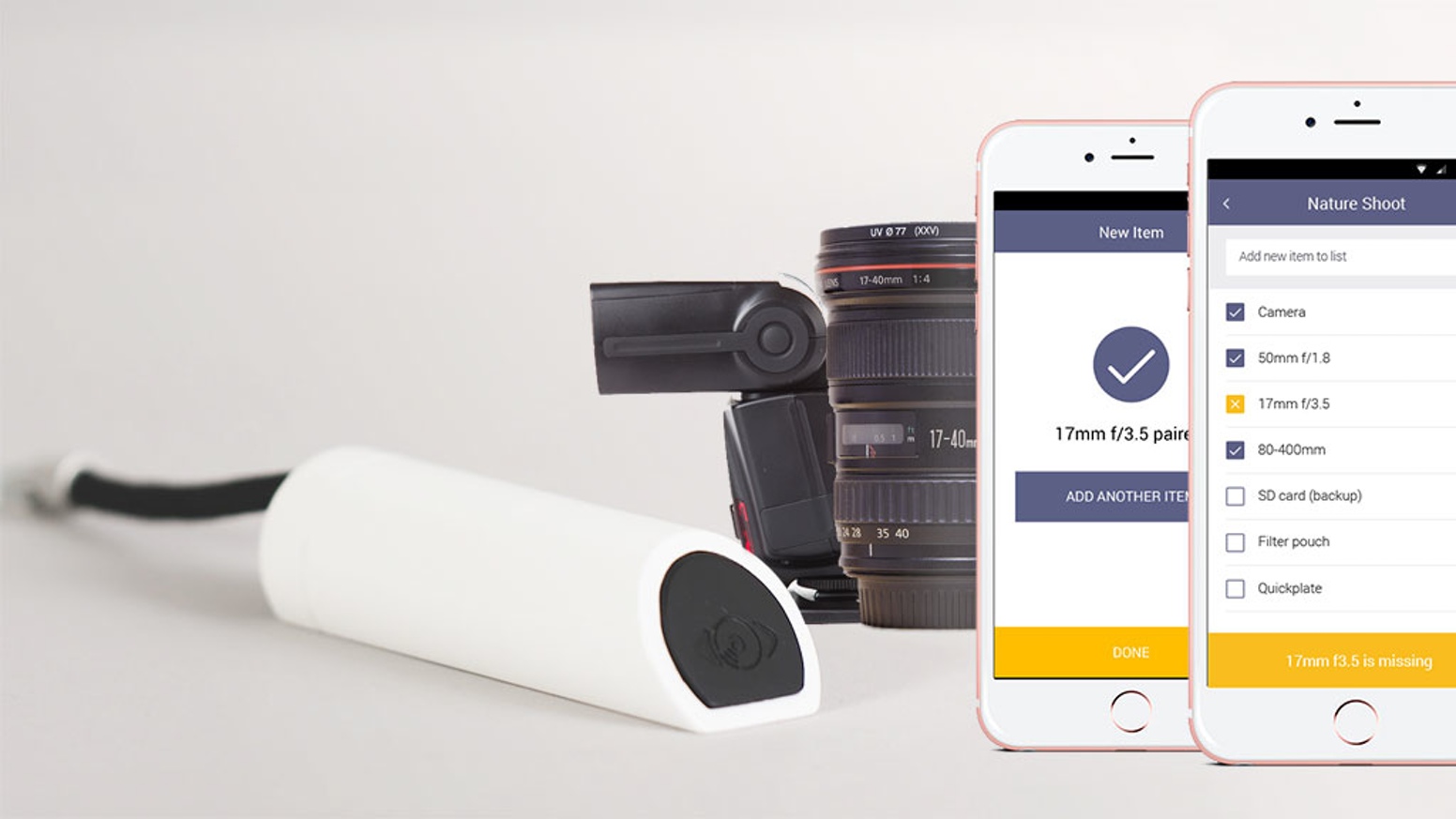
You may have seen it making the rounds on social media and Kickstarter over the past handful of months; Geareye is ‘the ultimate gear management system’, using an RFID antenna, RFID tags and an app to track your most precious items. We sent our trusted technical team to delve a little deeper…
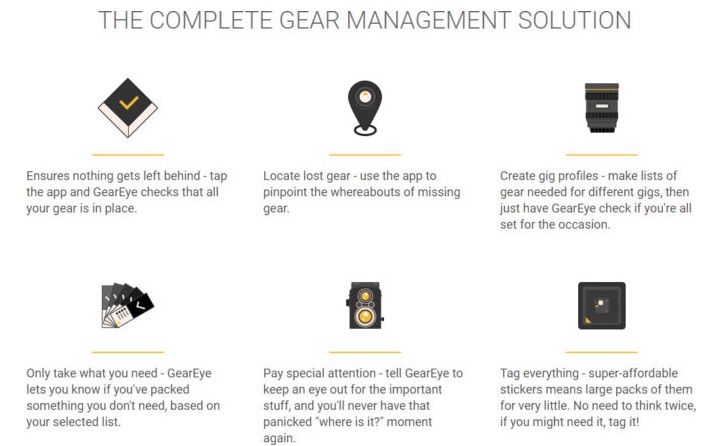
The overarching concept is that you won’t ever lose your equipment again, you’ll know exactly what you have with you and you’ll easily be able to track items if you do unfortunately end up losing something. You simply place an RFID tag on your items, name them through the app, place them into groupings/lists, and you’re done. If any item is not in range, it will show as missing. Great use of RFID and perfectly simple to use.
GearEye promotes the effectiveness of its product with examples of photography equipment, but the RFID tags will work on anything you wish to stick them on to – here’s our (un)official list of suggested items to tag:
- Your wallet
- Your keys
- Your children, so you’re aware that they’ve surreptitiously ran off to the supermarket sweet isle yet again
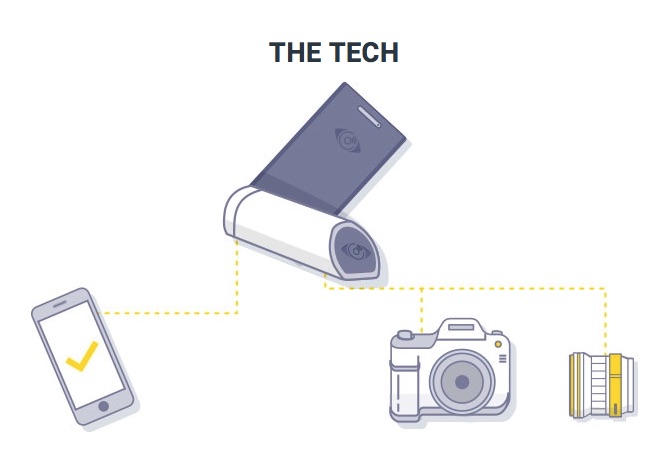
The scanning range is quoted as around 1-3 meters, and if any item is missing, you can find it in a 2 meter range. We can therefore only deduce that GearEye uses UHF (Ultra High Frequency) readers to provide this level of distance, and with the market average typically being 1-2m, the ‘extended’ aspect of their reader providing the additional 1m.
GearEye could be a fantastic tool to ensure you have a full itinerary of items before you leave a location, not once you’re home and you’ve noticed it isn’t present. Upon the unfortunate circumstance whereby you have lost something, GearEye states that it only has a 2 meter range for missing items. As a result, you might think that searching for one lost item might feel like you’re on a treasure hunt, using a metal detector to find a speck of gold on a deserted beach. So tracking something left behind in a shop, or your errant children, might only work if they are pretty close. But if you cannot spot your child from 1m – 2m away, then you might have a bigger problem than you think!
But GearEye has a solution; the app enables your antenna to periodically scan your tagged items ‘every so often’, and ‘remembers’ their GPS signal, simultaneously placing its location on a map and facilitates the ease of which you should find your lost items. This being said, it is a fairly vague statement to make; how often are the items scanned? Not exactly helpful if the answers are once every handful of hours. We can’t help thinking that an alert / notification-style feature, detailing if anything goes out of range, might solve this problem?
As well as this, further problems might occur if an item is 2.5m away, aka in scannable distance, but not in your bag / case – what’s to prevent someone from trusting the technology, walking away and leaving the item behind?
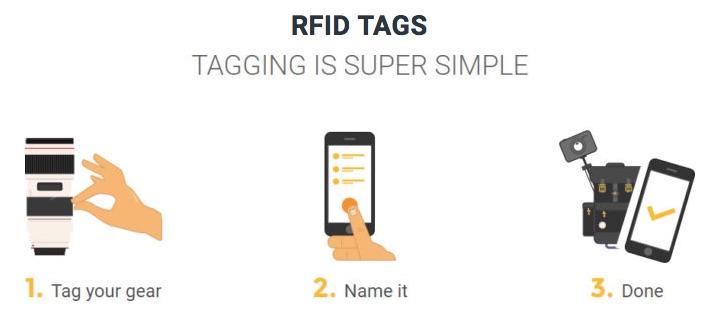
The ‘GearTags’ are ‘battery free’, which in technical terms translates to passive RFID tags. They capture a small amount of energy from the radio waves of the transmitter (in the case of GearEye, this is the phone case / dongle) just enough to send back a return signal. The amount of energy captured is nominal and that is one limiting factor in the range of tracking, mentioned above. If the transmitter sends out a stronger signal, more energy is subsequently generated; there is however a restriction in the UK to 2 watts power output… So our question would be: how much power does the RFID function use and what is the impact on the battery (or extended battery if consumers opt for the phone case)?
On the other hand, if GearEye were to use top-of-the-range active RFID tags (which make use of their own power source), you would be able to track your items via GPS satellite, even if it sailed over the Southern Ocean! If you’re sticking a tag on your BMW it might be deemed suitable, but perhaps it isn’t too practical for your car keys or wallet. Not to mention, active RFID tags are bigger and a lot more expensive, an aspect that I’m sure would put a lot of potential consumers off.
We were, however, very impressed with the range of different tags available for this management system. They rightfully include RFID tags for metal items, preventing the inevitable fallout that losing your keys behind your metal filing cabinet would incur, due to the tags ‘detuning’ if mounted on metal.
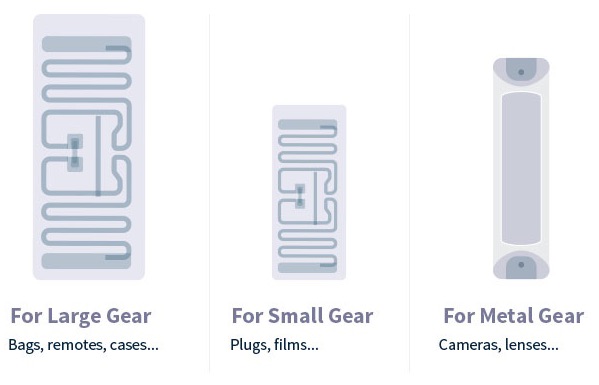
The question remains, why would you give someone who is poor at keeping track of stuff, more stuff?
Joking aside, it is great to see another intelligent use of RFID, in synergy with an app, being conceptualised and utilised. There seem to be a few limitations and questions to be asked about GearEye, but onwards and upwards for RFID!
What are your thoughts? Are you intrigued by the use of RFID in GearEye? Will you be backing the project? We'd like to know.
Please note, we have not tested GearEye. All comments and thoughts are made through online research and our expertise in this field.
By Matt Jakubiec, Pen Mobile Solutions , reprinted with permission.
Other Bar Code News:
- "OwlChain" Launched as the World's First Food Blockchain Provenance System
- Dialogic to Host Application to Innovation Summits Around the Globe
- EcoVadis Announces Winners of First-Ever Sustainability Leadership Awards
- Global Student RFID Tracking Market - Key Drivers and Forecast from Technavio
- ScanSource Named Distributor of the Year by Honeywell in Central and South America Region
- AIM Case Study Competition - 2017 Nomination Period Now Open
- TrueCommerce Announces New Architectural Design and User Interface on Cloud Based Manager
